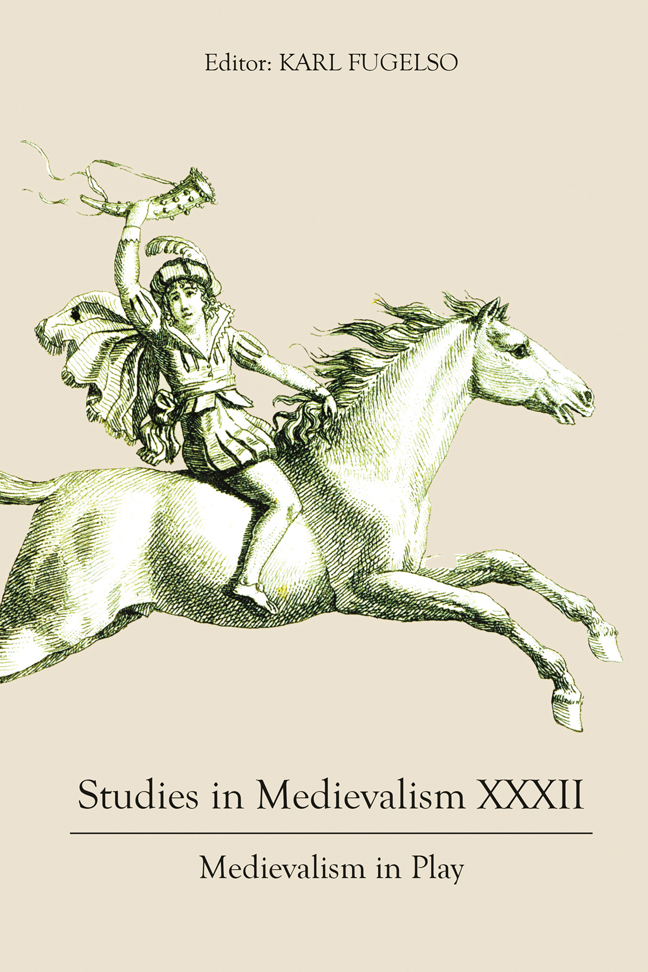“Boy, what do those runes say?”: Runic Play in Norse-Themed Digital Games
Published online by Cambridge University Press: 12 January 2024
Summary
Runes have long been a staple of fantasy games inspired by the cultures of early medieval Europe. As Daniel T. Kline points out, there is a direct line of descent from participatory tabletop fantasy role-playing games such as Dungeons & Dragons to the “immersive digital environment” of video games like World of Warcraft, both of which are ultimately “created from the shards of recognisable neomedieval worlds like Tolkien's Middle Earth.” Runes, co-opted by Tolkien to add depth and coloring to his legendarium, are one of the most prominent of these reincorporated “shards”: as exotic but recognizable symbols adorning the classic HarperCollins covers of his books, they have come to play a key role in signposting the genre of medieval fantasy and inviting players to enter into what Johan Huizinga refers to as the bounded “magic circle” of this alternative world. As Maja Backvall points out, because of their reflexive use, runes in video games enter into a feedback loop in which their associations are mutually reinforced across the genre, leading to internalized conventions that have little to do with the historical tradition that first inspired Tolkien.
Recently, however, a new generation of “triple-A” digital games have come to the market that invest more deeply in Norse myth and history in the creation of their expansive in-game worlds, and that parse their relationship both with Tolkien's fantasy runes and with the historical runic tradition in quite a different way. Runes in games such as Hellblade: Senua's Sacrifice (2017), God of War (2018), and Assassin's Creed: Valhalla (2020) continue to invite participation in the worlds being created, but in a far more active way: through the posing of runic puzzles, incorporation of hidden messages to be revealed, and use of runes as participatory games-within-games. This has created a new interface between twenty-first-century media and the historical use of runes: one that has the potential to inform our thinking of runic play and its place in the practiced tradition, and even to refocus our attention on the disciplinary developments that have prevented full recognition of the central role of play in the history of rune writing.
Play in the Historical Runic Tradition
Play in the historical runic tradition has often been dismissed as a peripheral activity.
- Type
- Chapter
- Information
- Studies in Medievalism XXXIIMedievalism in Play, pp. 31 - 50Publisher: Boydell & BrewerPrint publication year: 2023



